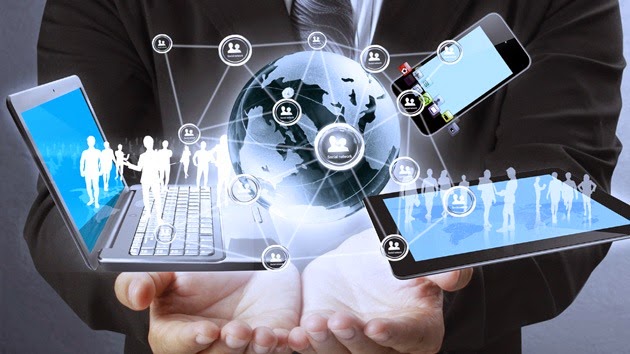
Technology
Top 10 Technologies That Are Trending Right Now
The tech field is notoriously fast-paced and unpredictable.
Here are 10 technologies which are showing such great promise, it seems absurd to think they won’t be vitally important.
1 Machine Learning
Machine learning is a technology that goes hand-in-hand with artificial intelligence. In fact, both technologies are intimately connected to one another. But whereas artificial intelligence allows humans to make machines smarter, machine learning allows machines to make other machines, or even themselves, smarter.The potential applications for such a technology are endless. For example, an artificially intelligent machine capable of learning and improving could be used to provide technical support instead of a human being, or the much more rudimentary AIs we use now.2 Artificial Intelligence
The capabilities of our current artificial intelligences (AIs) is certainly impressive. So ubiquitous has AI become in our lives that many of its most ingenious implementations pass us by unnoticed. Now that voice assistants are becoming more common in the home, artificial intelligence is once again in the spotlight.The potential uses for sufficiently advanced AIs are endless. One hospital in London is already preparing to introduce AI to handle some of the work currently done by doctors and nurses.3 Electric Vehicles
The world of personal transport is currently undergoing a massive shift, largely driven by electric and driverless vehicles becoming a reality. Recently, Tesla unveiled their first electronic, autonomous cargo truck. Within a few years, Tesla will be moving inventory between various locations using these autonomous vehicles.Non-autonomous electric vehicles will also prove significant in the near future as we look for ways to reduce carbon emissions. Many nations are planning to phase out diesel vehicles entirely.4 Cryptocurrencies
Even if you don’t really understand them (don’t worry, few do currently), most of you will, by now, have come across cryptocurrencies. The most popular of these is Bitcoin, which has received coverage recently for its wild price fluctuations.Cryptocurrencies could, in theory, completely overhaul the way we think about economic and financial systems. No one is quite sure where this road will end, but it seems that crypto is only gaining ground. Pages like this guide on how to buy crypto should give you an idea of how accessible this tech currently is for the average person.5 Computational Photography
Computational photography takes advantage of the fact that many cameras today contain relatively powerful processing chips. By improving these processors, as well as the image sensors themselves, camera manufacturers are beginning to look at ways of taking advantage of all that unused computing power.The Galaxy S9+ from Samsung makes use of computational photography. In fact, we have seen limited uses of the technology already in smartphones. This makes sense after all smartphones pack some serious computing power these days!6 3D Printing
The hubbub around 3D printing might have temporarily abated, but this is still going to be one of the most important technologies of the next years and decades. 3D printers are becoming even more complex. Whereas they initially were able to do little other than making plastic models, there are now 3D printers which are used to produce synthetic organs for transplant.The ability to 3D print pieces that are made from multiple materials will be a game-changing development and one that we are already touching on. To give you an idea of just how big we’re dreaming with 3D printing, NASA has tentative plans to send a giant 3D printer to the moon, where it will produce a moon base piece by piece, to be assembled by astronauts.7 Internet Balloons
Both Google and Facebook have now expressed an interest in launching a fleet of internet balloons. These balloons will essentially form a ring around the earth. In geostationary orbit, they will be able to provide internet access across the globe. The thought of having access to a Wi-Fi connection as commonly and as easily as we currently access mobile data networks is definitely appealing. Not only would it make online activities easier on the go for the average person, it would be a serious boon to economies across the world.8 Home Diagnostic Tests
We mentioned earlier that a hospital in London is gearing up to unleash its own AI system, which will have some diagnostic capabilities. This is great if you’re at that hospital, but what are the rest of us to do? As we deal with a growing and ageing population, healthcare systems in many developed nations are looking for ways to ease the burden.Home diagnostic kits will allow patients to test themselves for potential diseases or illnesses. There have already been some significant developments in this area of the last decade or so, but the ‘holy grail’ of home diagnostics is a universal system that can analyse a patient for any problem. Until then, we can expect to see a growing number of diagnostic tests for specific illnesses.9 Cloud Computing
Cloud computing is another technology which many of us are already familiar with, but which still has some way to go before it reaches its apex. Cloud computing has revolutionised the working lives of millions of people; it is because of cloud computing that many of us are able to do our jobs remotely. However, the future of cloud computing lies in its ability to facilitate the ‘borrowing’ of computing power. Let’s say that you have a reasonably powerful computer that needs to complete a complex analytical task. So complex is the task, it will require almost all the computing power your computer has. However, it will take a very long time to complete on its own. In such a case, the computer could utilise cloud technologies to offload some of its work to another computer, which may be very far away.As the speed and sophistication of cloud services increases, we are moving ever closer to the point where any computer can, virtually instantaneously, communicate with another.10 Augmented Reality
With virtual reality receiving most of the press coverage recently, many people have completely forgotten about augmented reality (AR). A few years ago, when Google unveiled their Google Glass, there was a great deal of excitement, which has since died away. AR is gradually making its way onto smartphones, and it is easy to understand why. Smartphones are the perfect platform for this kind of technology. It won’t be long before you can hold your smartphone up, look through its camera, and receive a wealth of information about what it can see.With the rate at which technology evolves and the unpredictable nature of emerging tech, it’s not always easy predicting the future of tech. However, the 10 technologies above will be some of the most important going forward.

















